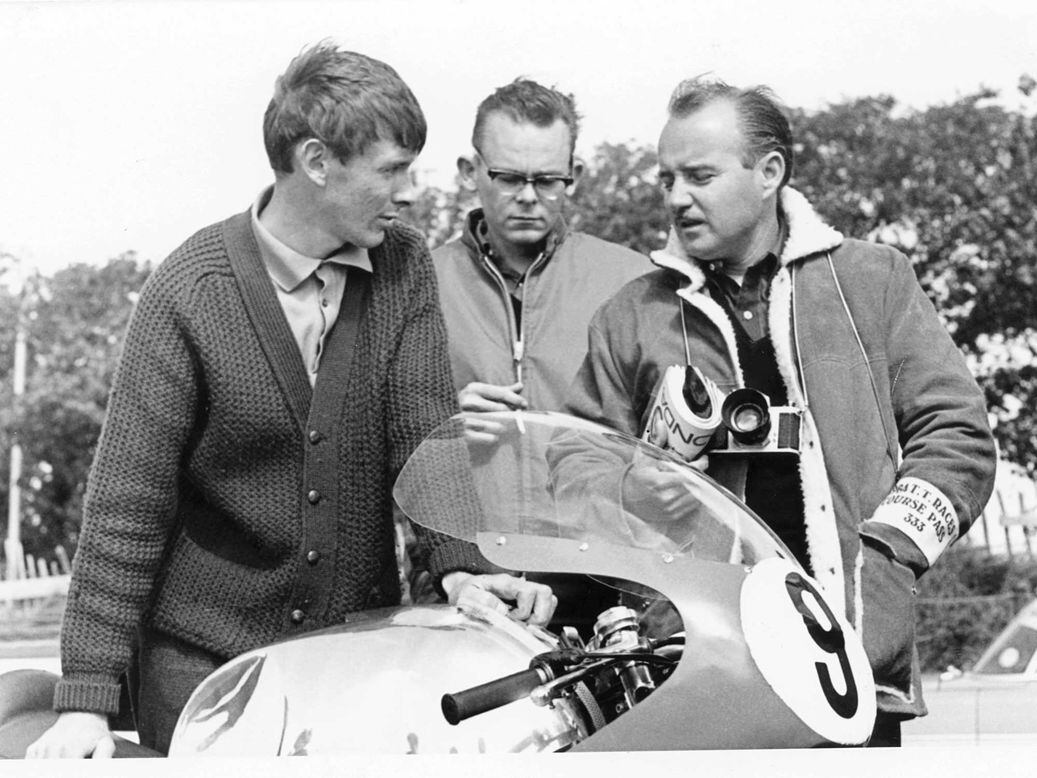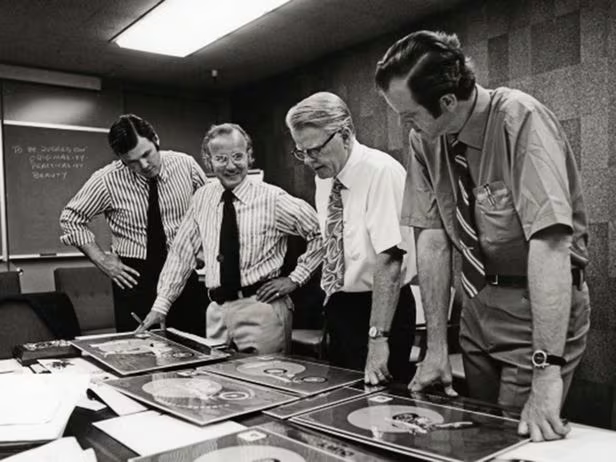
The Man Who Changed Motorcycle Magazines
by Larry Lawrence | November 23, 2016 | Courtesy CycleNews | Photo by D. Randy Riggs/Cycle World
Joe Parkhurst is generally acknowledged to be the person responsible for bringing a new era of objective journalism to motorcycling in the United States. By launching of Cycle World magazine in 1962, Parkhurst supplied real reviews of motorcycles and related products — good or bad — to motorcyclists hungry to read about the burgeoning sport. Parkhurst was also open to the Japanese brands, which were just starting to make an impact on American shores in the early 1960s, but were largely ignored by U.S. motorcycling publications of the time. Within a year of its introduction, Cycle World became — and remains — the largest motorcycling magazine in the world.
Born Joseph Conrad Parkhurst in Jonesboro, Arkansas, on October 20, 1926, he was 3 when his family moved to California. After graduating from Van Nuys High School, he enlisted in the Army and was a private, stationed in Hawaii. He served in 1954-56 as a clerk in an Army Reserves office, worked as a junior-level artist at Disney Studios, and then took a job as art director of Road & Track magazine in Newport Beach. He later took a year-long sabbatical and traveled in Europe, where he was a freelance photographer for the magazine. In 1960, he returned to become art director for a go-kart magazine.

Parkhurst was an avid motorcycle enthusiast, but said he could never find anything worthwhile to read about them. So, he decided to start a motorcycling publication patterned after the high standards of the successful Road & Track. Parkhurst and his first wife, Betty Jean, mortgaged their home and put every last penny they had into getting Cycle World off the ground.
Times were tough in the early days of the magazine. A publisher of a competing magazine underhandedly led an effort to have U.S. and British makers boycott advertising in Cycle World. Initially, the boycott hurt the magazine, but Parkhurst overcame the boycott by putting out a quality publication with fair and accurate road tests and reviews of motorcycles. Parkhurst also enlisted the help of some of the most popular racers of the time to give their impressions of new bikes.
Perhaps the biggest coup for Cycle World was the hiring of Gordon Jennings as technical editor. Jennings’ prose gave Cycle World its clear voice of authority and credibility.
Jennings wrote about the beginnings of Cycle World in one of his last columns for Motorcyclist.

“Parkhurst talked the printers into extending a line of credit, sold his sailboat and Porsche, drove around in an old Ford station wagon with matching holes in its floor and exhaust system, and on a couple of occasions borrowed eating money from me. It was hollow-belly time for him, and things stayed that way for many lean months. I think most men would have tossed in their cards. He didn’t, and CW became America’s first modern-era motorcycle magazine, burying its feeble competition. Give thanks to Joe Parkhurst, who started it all. Others might have done it, but Joe did.”
Parkhurst’s vision ultimately proved to being wildly successful. Within a year of its launch, Cycle Worldbecame the most-read motorcycling publication in the world. Parkhurst’s financial risk also paid off handsomely when, in 1973, media giant CBS purchased Cycle World, making Parkhurst a wealthy man.
Years later Cycle World editor David Edwards shared a conversation he once had with Parkhurst. “I asked Parky if when he hocked his possessions and borrowed from friends to get things going back then, had he dared envision Cycle World growing from a shaky proposition into the world’s largest-selling motorcycle magazine.”
Parkhurst replied, “Oh God, no. Truth is I was just a dirtbike bum who loved riding in the boondocks. I knew we could put out a better book than what was on the market, but CW’s success was helped immensely by timing – the Japanese-led 1960s bike boom was about to hit – and by the good business sense of (first wife) Betty Jean.”
Parkhurst liked to put it to the competition as well, and sometimes in a fun way. Former CW staffer D. Randy Riggs said Parkhurst walked by his office when Riggs was booking his first flight traveling for the magazine. “Joe overheard that I was trying to be frugal with company money and trying to book the most economical flight and he reached his head into my office and told me to book a first-class ticket. I asked why and he said, ‘Because a lot of times the Cycle guys are on the same flight and I always love it when we’re in first class and they’re in coach!’”
In addition to publishing, Parkhurst was also a major contributor in other areas of motorcycling. Under his direction, Cycle World sponsored one of the first international motocross races in the United States and backed the first U.S. round of the World Trials Championship. Parkhurst inaugurated the annual Cycle World Shows, at the time the largest consumer motorcycle shows in America. A dedicated race fan, Parkhurst helped send Steve McQueen and Bud Ekins to the International Six Days Trial, and spearheaded a three-bike team bound for the road races at his beloved Isle of Man. He also was co-founder of Saddleback Park, one of the first motorcycle-dedicated off-road riding areas.

Parkhurst’s interests seemed limitless. He enjoyed playing and listening to jazz, was a sailing enthusiast, one of the country’s first SCUBA instructors, a world traveler and lover of history.
Well-known British motorsports photographer B.R. Nicholls remembered an incident with Parkhurst that left him impressed.
“I recall taking Joe with Dan Gurney to a British motocross meeting and on the trip, we passed the historic site of Stonehenge. It was Joe who was able to tell Dan the history of the place far better than I could have done. Joe’s enthusiasm for life, that ready smile and sudden ‘Oh my God’ in appreciation of a competitor’s riding skill — or a good malt whisky — is something I will always remember.”
Parkhurst stayed with the Cycle World as editor, then publisher, until 1977. In his later years, Parkhurst never slowed. He published Motorcycle Business Newsletter, an industry biweekly, and founded GreyWolf Gear, an off-road clothing company.
Parkhurst died from complications of lung cancer on December 5, 2000. He was 74. Joe was inducted into the Motorcycle Hall of Fame in 2001.